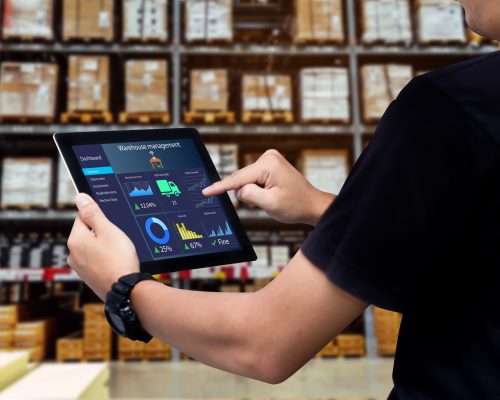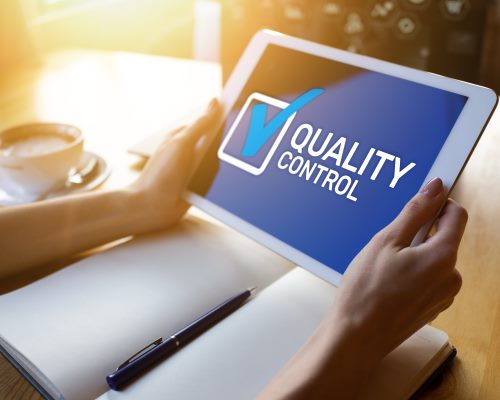70% less time
for researching, consulting,
and sharing information
50%
less time to follow client requirements
60%
less time on process
modifications
What is meant by PLM software?
What is Product Lifecycle Management?
Product Lifecycle Management (PLM) refers to all internal processes, technologies and methods used to manage a product’s lifecycle. This lifecycle is usually separated into 4 steps: design, development, manufacture and usage. The main purpose of PLM is to facilitate control and to track changes in a product, from the design stage to its eventual withdrawal from the market.
Generally speaking, all product development teams use some sort of lifecycle management system. But most of the time, this system is not kept on course by a specialized software package. Many departments are involved in product development (Marketing, R&D, Quality, etc.), and they are in turn connected with suppliers and service providers, e.g. design agencies. Stakeholders often use their own templates and software, send files by e-mail, save them locally and on shared networks, and so on, all of which lead to siloed information and data loss.
Resolving these problems is the starting point for PLM software as it centralizes all product-related data and documents in a virtual vault to which every stakeholder involved in a project has access. Furthermore, it helps teams keep track of product changes and developments.






What is PLM software used for?
PLM software enables companies to centralize, share and secure information, automate processes and standardize product development methods. It serves to reduce product development time, improve communication among teams and partners, and capitalize on information and latent knowledge. Its role includes the organization of project documentation and project information that can be modified as necessary to meet the needs of project teams.
PLM software helps every department involved in product lifecycles, and although everyone views the product from their own perspective, access to the right information at the right time is guaranteed. Once uploaded, data can be analyzed from different angles using dashboards tailored to suit various employee or business profiles. These profiles make it possible to structure information around different criteria to make it more comprehensive.
Which companies use PLM software?
Originally, PLM was developed for the aviation and auto manufacturing industries to help manage the complexity of resources with millions of parts, sourced from thousands of suppliers.
PLM is no longer limited to a specific product and can help any company that develops products and that faces market pressures such as lowering costs, improving quality, or shortening its time to market.
PLM, through its ability to handle complex environments, has been proven useful for Consumer-Packaged Goods industries (CPG), such as Food and Beverages and Cosmetics and Personal Care, since the 2000s as the complexity of these sectors has grown (the result of regulations, internationalization, market trends, etc.). The real differences between CPG industries and DMS (Discrete Manufacturing Systems) are the life span of their products and the underlying objectives, namely increasing speed to market for CPG, and long-term change management for DMS (unit changes on an aircraft or in a nuclear infrastructure, for example). Moreover, CPG manufacturers are facing shortened product lifecycles and a greater need for innovation to stay competitive. By strengthening collaboration and information sharing, and enabling a single frame of reference to be created, PLM solutions allow companies to capitalize on their knowledge and lay the foundations for innovation.






Company needs will vary depending on size, business sector and their level of digitalization; but regardless of profile, if company projects have stumbled, if team communication has sometimes not been optimal, if you have regulatory requirements to meet or if your costs have risen, then PLM is for you.
To ensure that the solutions offered are suited to a company’s needs, PLM software is tailored to the targeted industry. Aptean therefore has two customized solutions, one for the Cosmetics and Personal Care industry and one for the Food and Beverage industry. It is crucial that your supplier offers a solution that meets your expectations and business requirements.
What are the benefits of PLM?
A PLM solution offers many advantages. In addition to the benefits already mentioned, it improves reliability and product quality, lowers prototyping costs and allows you to identify new development opportunities.
By improving acquired knowledge and information and capitalizing on project feedback, PLM software becomes the backbone of any project. Integrated performance indicators mean that project managers and general management can use the solution to help develop a strategic vision in addition to the operational gains it delivers.



What is PLM technology?
| Discrete Manufacturing and Systems (DMS): | Consumer Packaged Goods (CPG): | |
|---|---|---|
| As-design | entity/nomenclature specific to the product design | identification of the ideal product/recipe from prototyping, adapted to the production system and send to the ERP. |
| As-Build | entity/nomenclature originating from « As Design » adapted to product manufacturing | identification of the ideal product/recipe from prototyping, adapted to the production system and send to the ERP. |
| As-maintain | traceability via configuration management and versioning of modification operations / maintenance | Tracking evolutions thanks to elements versioning |
A modern PLM system is based on:
- A data / document base enabling users to record and track every product modification, and consolidate raw data. It offers data visualization (dashboard, reports, formula indicators, etc.) and document management (marketing brief, specification sheets, artworks, etc.).
- A workflow engine used to distribute and validate data in real time. Making use of modules like Nomenclature management (for DMS) or formulation management (for CPG industries), change management (versioning) and product configuration management, it facilitates project management and improves collaboration among stakeholders.
- A reporting engine to enhance data.
- PLM creates links between product data enhancing information by making it intelligent. It provides impact analysis, decision support and automated generation. It allows users to see data from every point of view, or as a tree structure, and simplifies configuration management.
It runs on a web-based interface and can be hosted in the cloud. Some features are accessible on mobile devices.
PLM also extends beyond a company’s four walls by inviting partners, suppliers, and customers to use the solution.
More and more users of tablets and smartphones are accustomed to having user-friendly access to data anywhere and anytime, including work-related data, and these mobility issues are addressed.
The need to exchange data, not just documents, with partners is growing in response to the internationalization of partnerships, shorter decision-making cycles and the need to consolidate data.
PLM integration within infrastructure
-
- PLM manages all data related to product development, including product descriptions, configurations, product developments over time, etc.
- ERP manages sales, stocks, purchasing, billing, accounting, production.
- PIM (Product information Management), meanwhile is used to gather data on products to ensure their efficient distribution.
There are many benefits to integrating all three solutions, such as smooth flow of information, data reliability, meeting deadlines, fewer errors, etc.

